Heating systems: an overview of popular schemes and features
It would seem, what can be difficult in the construction of a climate network? According to the majority, this is either a heating point of the heating system or an individual boiler that heats the heat-transfer fluid. Then water or antifreeze through the pipes enters the radiators, where the secondary exchange of thermal energy with the air in the room takes place.
But behind the external simplicity there are very complex engineering solutions, the instruction and maintenance manual of which takes more than a dozen pages.
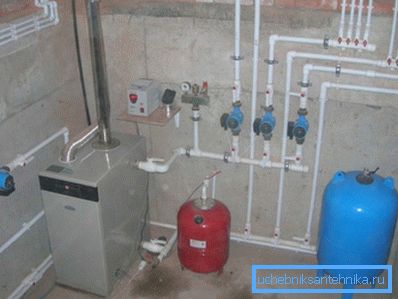
Methods of heating the coolant
Central heat points
With the help of centralized boilers, the heat carrier is heated, which is then supplied to the residents of city apartments. Also this type of heating is sometimes organized in the cottage settlements.
Climate systems with centralized water supply have the following features:
- heating equipment is located in a specially equipped building and heats the water intended for a large number of consumers;
- for supplying liquid to recipients, heating lines are used, which are usually laid in underground channels;
- Adjustment of all parameters of the coolant (temperature, pressure, physical and chemical composition, water velocity) is also centralized, the end user cannot influence them.
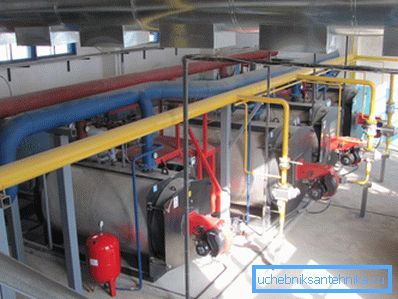
Standalone installations
In such systems, the heating of water, which is then sent to radiators, is done individually for each apartment or house. For this purpose, own heating boiler is installed. You can choose it yourself, based on the power and type of fuel used.
The following varieties exist:
- Gas. The most common option. Natural gas is used, which is supplied through trunk pipes or stored in gas cylinders or a gas-holder. The heating system with a gas boiler is one of the most economical, but only certified specialists can install and maintain such equipment.
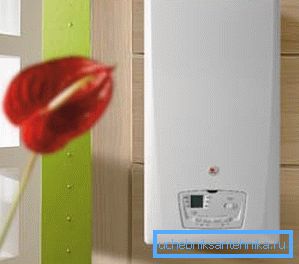
- Solid fuel. Excellent and inexpensive option for houses to which the main water supply system is not brought. The fuel used is wood, lignite, peat, and so on. There are even units operating on biomass. With their help, you can organize the most environmentally friendly heating.
- Fuel oil. Heating systems, which include a liquid fuel boiler, operate completely autonomously and do not require periodic human intervention to load fuel. The only drawback is the high price of diesel fuel and the need for roomy storage equipment for diesel fuel.
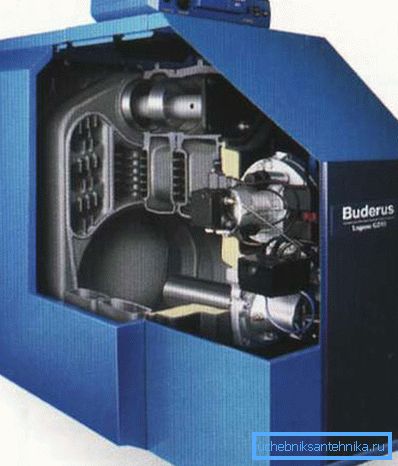
- Electric. Can also be used to heat the coolant. Have excellent consumer properties and technical characteristics. But fuel - electricity - is too expensive, because the heating system will not be economical.
Mostly electrical units are used as additional or backup equipment.
Note! For larger houses or commercial buildings, a bifilar heating circuit can be installed, which includes not one but two boilers serving the different contours of the climate network.
Also, engineering of climate systems using alternative energy sources is currently underway. The most promising thermosyphon heating system using sunlight.
However, the development of equipment is at such a level that it is impossible to use these devices as basic ones. The generated heat energy is not enough to provide the house with heat.

Ways of laying pipes
Having dealt with the boiler, you can proceed to the choice of pipe layout. Here difficulties should arise.
There are three main varieties:
- Single pipe In this case, along the perimeter of the room, a trunk pipe is laid into which the batteries are driven. The installation scheme of the latter can be sequential (coolant flows through each heating element, it does not have any other way) and parallel (water flows through the pipe and enters the batteries by means of drainage channels going to the radiator inlet and outlet).
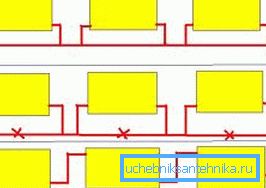
- Two-pipe Here two channels are laid - one for supplying hot water, the other for returning the coolant to the heating equipment. A more flexible system that allows you to precisely adjust the temperature in the rooms and makes it possible to repair or change radiators without stopping the operation of the entire heating system.
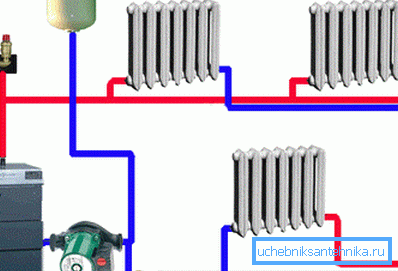
The two-pipe scheme has two varieties:
- dead-end heating system - in this case, a pair of lines goes to the last room, where it is connected by a jumper;
- associated heating system - mains with coolant bypass all rooms and return to the boiler.
The second type is preferable: less materials will be required for its production.
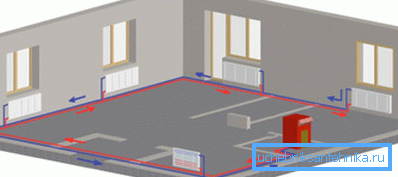
- Collector. The coolant is supplied to the collector, which distributes it to each battery separately. The most flexible system, but the installation requires too much money.
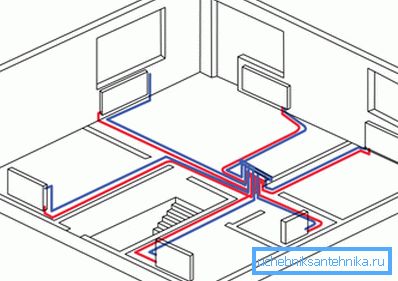
Problems with heating and their solutions
General breakdowns and routine maintenance
Like your favorite Daewoo Nexia or Toyota Prado, the heating network requires periodic maintenance.
In addition to the planned technical works, the heating system can fail for some unforeseen reasons:
- the expansion tank or the so-called buffer capacity is depressurized or rusty;
- hydraulic shock, arising in the heating system, will destroy the radiators;
- a large leakage is formed, which can cause airing or complete emptying of the heating pipelines;
- as a result of external physical impact, the pipe or the radiator will be damaged, and so on.

Note! If the breakdown occurred in the heating boiler (especially gas), in no case should you fix it yourself. Even if the controllers or the thermometer simply failed, the sealant dried out or they started to let through the gel seals on the nozzles, you need to seek help from the professionals. The instruction manual of the heating equipment directly prohibits unauthorized interference with the operation of the device.
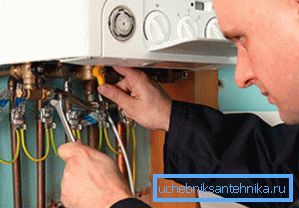
In order to avoid problems during the operation of the system, it is desirable that the design or reconstruction, as well as commissioning, be carried out by a special team of plumbers. At the end of the work, they will draw up an act of acceptance and an act of inspection of the system, which you will have to sign, provide you with a drawing and passport of the climate network, and will also give a guarantee on the work performed.
In the event of an accident, if you flood the neighbors, and an examination proves that the failure occurred due to installation errors, the company-contractor will compensate for the damage. The reason for filing a lawsuit to the court will be the documents mentioned above.
Independent installation is also desirable to carry out under the control of an experienced specialist, who has already been engaged in heating. In addition, you do not need to save money on the purchase of materials, take only high-quality pipes.
For example, well-proven parts sold under the trademark Rehau. Although their price is quite high, it is an excellent choice that will not make you disappointed.
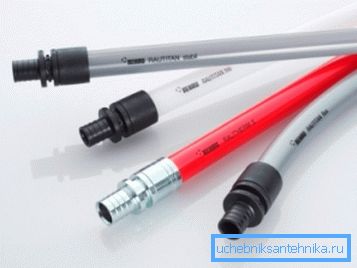
Routine maintenance of heating systems can be carried out independently. The most common problems and solutions are given in the table below.
| Problem | Decision |
| Reheat in the heating system | Such a nuisance is rare when operating climate networks. Reheating can occur in apartments located close to centralized heat supplies and only if the rules for installing batteries have been violated. When nozzles are connected by a working bypass, you can stop thinking about any reheating. As for autonomous systems, here the temperature is controlled by you personally using electronic boilers. |
| Water hammer prevention | This term refers to a sharp increase in pressure of the coolant in the system, which can lead to breakdowns of pipes, fittings and, most often, heating radiators. It is easy enough to cope with the problem. In an autonomous system, it is necessary to slowly fill the coolant into the pipes, and in the centralized system, equip the battery inlets with thermal valves, which should be screwed on when the system is started up and slowly released so that water fills the battery with a small stream. |
| Feed system | If the closed heating system is equipped with an open-type expansion tank, it is necessary to constantly monitor the level of heat carrier in it. The liquid tends to evaporate, so the volume of water circulating through the pipes decreases. It is necessary to periodically make up for losses. To do this, it is not necessary to climb into the attic, the lack of coolant can be determined by the pressure gauge installed on the dashboard of the boiler. |
| Climate network cleaning | In the process of working inside the radiators (especially cast iron), mineral deposits are formed, which must be disposed of. Consider how to flush the heating system: for this there are chemical and mechanical means. You can either pour a special solution into the system, or dismantle the heating elements and clean them with special hydraulic or pneumatic pistols. To protect the centralized heating system from littering with debris, it is advisable to install a sump for the supply pipe. |
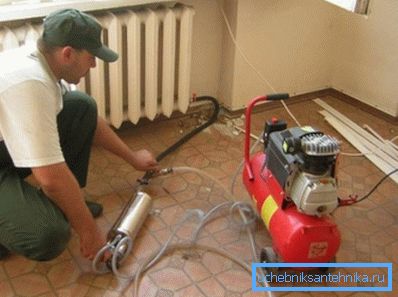
Tip! Many owners of autonomous networks ask what to fill in the heating network. Most often water acts as a heat carrier, less often - special antifreeze. If you want to save, use water.
However, before this it is desirable to soften it with the help of special equipment or solutions. This will help to avoid the formation of scale on the pipes and increase the time between flushing the system.
Depressurization system
The greatest amount of trouble during the operation of heating networks is caused by the violation of tightness of pipes, fittings, taps, radiators and other equipment. The point here is not so much in troubleshooting, but in how to find a leak.
If the pipes are laid openly, you only need to arm yourself with a flashlight and make an audit. But what to do if the supply and return flow are disguised under a screed, and on top of that are also laid marble slabs, on which huge money was spent?
Here you can give only one piece of advice - you need to protect yourself from leakage even at the installation stage. For this, it is advisable to use special pipes (metal-plastic or made of cross-linked polyethylene) and make sure that no compound is filled with concrete.
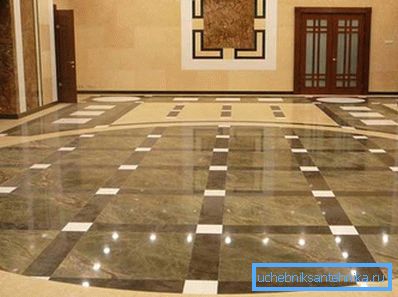
Conclusion
Periodic cleaning and feeding of the heating system, eliminating leaks and servicing the boiler will allow you to significantly increase the life of the climate network of your home. In more detail with the order of operation of engineering networks of a residential building, you can learn from the video in this material.